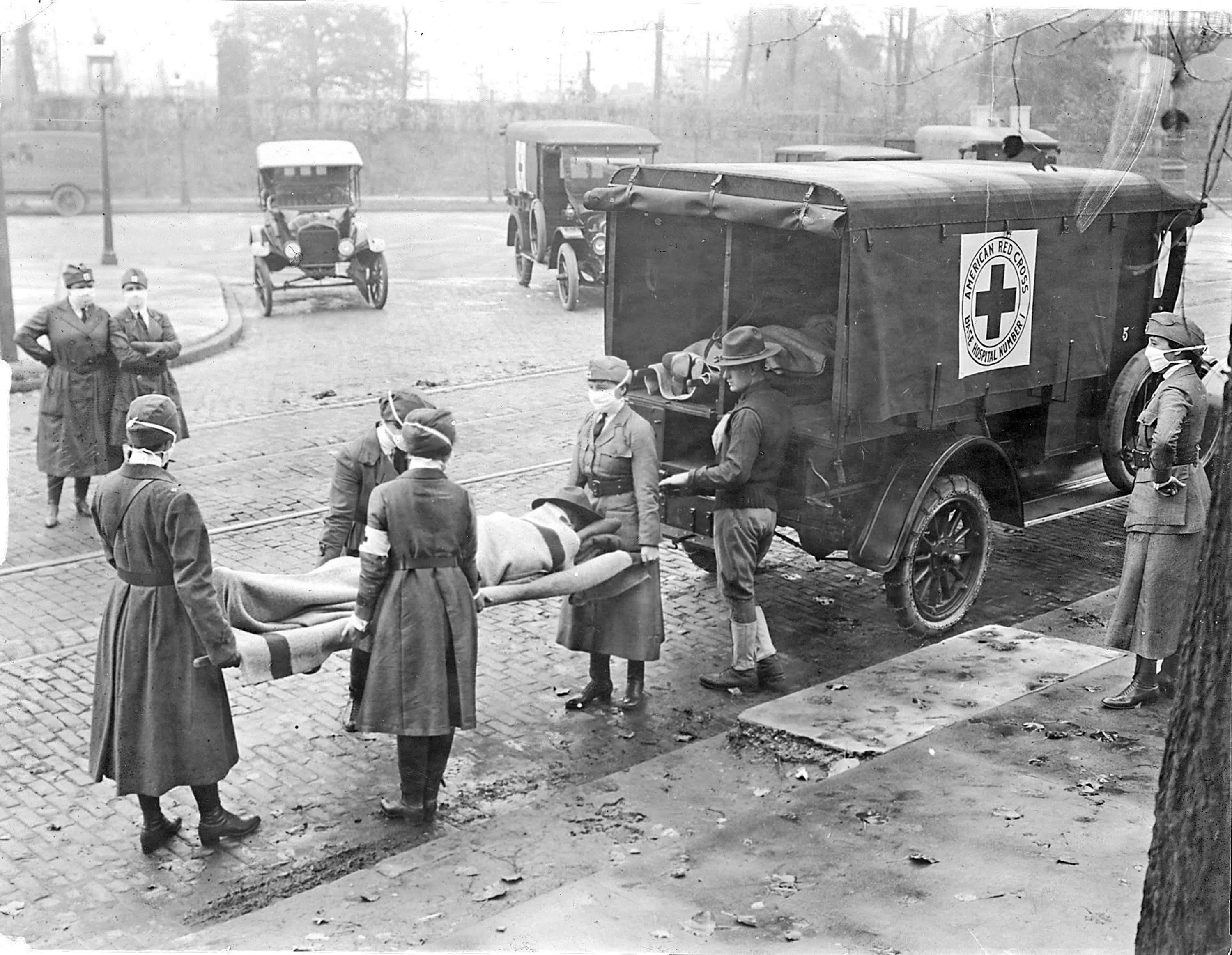Members of the American Red Cross remove influenza victims in 1918.
St. Louis Post-Dispatch | Tribune News Service via Getty Images
The coronavirus is at least as deadly as the 1918 flu pandemic and the death toll could even be worse if world leaders and public health officials fail to adequately contain it, researchers warned in a study published Thursday in the medical journal JAMA Network Open.
“What we want people to know is that this has 1918 potential,” lead author Dr. Jeremy Faust said in an interview, adding the outbreak in New York was at least 70% as bad as the one in 1918 when doctors didn’t have ventilators or other advances to help save lives like they do today. “This is not something to just shrug off like the flu.”
Researchers compared excess deaths in New York City during the peak of the 1918 pandemic with those during the first few months of the Covid-19 outbreak. They used public data from the Centers for Disease Control and Prevention, the New York City Department of Health and Mental Hygiene and the U.S. Census Bureau to conduct their analysis.
The increase in deaths during the 1918 flu pandemic was higher overall, but comparable to that observed in the first two months of the coronavirus outbreak in New York City, the researchers found. But when taking into account improvements in hygiene, modern medicine and public health, the increase during the early coronavirus outbreak was “substantially greater” than during the peak of the 1918 pandemic, the researchers wrote.
“If insufficiently treated, SARS-CoV-2 infection may have comparable or greater mortality than 1918 H1N1 influenza virus infection,” Faust wrote in the paper. He’s a physician at Brigham and Women’s Hospital and an instructor at Harvard Medical School.
The study’s authors noted that their research had limitations. The researchers said it’s unknown how many Covid-19 deaths have been prevented since the outbreak began because of modern improvements in health care that weren’t available a century ago, such as supplemental oxygen and ventilators.
The new study comes as the coronavirus continues to rapidly spread across the United States and worldwide. The virus has infected more than 20 million people worldwide and killed at least 749,700, according to data compiled by Johns Hopkins University. The U.S. has the worst outbreak in the world with more than 5 million infections and at least 166,000 deaths, Hopkins data shows.
The U.S. recorded more than 1,500 deaths caused by Covid-19 on Wednesday, marking the deadliest day for the country since the end of May.
A separate study published July 1 in JAMA Internal Medicine in July found the number of confirmed U.S. deaths due to the coronavirus is substantially lower than the true tally.
Those researchers found that the excess number of deaths over normal levels also exceeded those attributed to Covid-19, leading them to conclude that many of those fatalities were likely caused by the coronavirus but not confirmed. State reporting discrepancies and a sharp increase in U.S. deaths amid a pandemic suggest the number of Covid-19 fatalities is undercounted, they said.
The World Health Organization says there is no “silver bullet” for the virus and health-care workers will likely need an array of treatments to help patients fight the disease. Currently, many hospitals in the U.S. are using antiviral drug remdesvir, which has been shown to help shorten the recovery time of some hospitalized patients. There are also numerous vaccines in development with at least 26 already in human trials, according to the WHO.
Public health officials and infectious disease experts have often compared Covid-19 to the 1918 flu, which is estimated to have killed 50 million people worldwide from 1918 through 1919, including 675,000 Americans, according to the CDC. More than 20 million people died in World War I, by comparison.
Dr. Anthony Fauci, the nation’s leading infectious disease expert, has said the coronavirus is a “pandemic of historic proportions” and history books will likely compare it to 1918. He has mentioned the “extreme” range of symptoms people can experience after contracting the virus, including pediatric multisystem inflammatory syndrome. PMIS is a rare inflammatory condition found in children with Covid-19 that’s similar to Kawasaki syndrome and has caused neurological damage in some kids.
“We learn things every week,” he said on July 13.
The researchers of the new study said their findings may help officials contextualize the unusual magnitude of the Covid-19 pandemic and “lead to more prudent policies that may help decrease transmission.”
